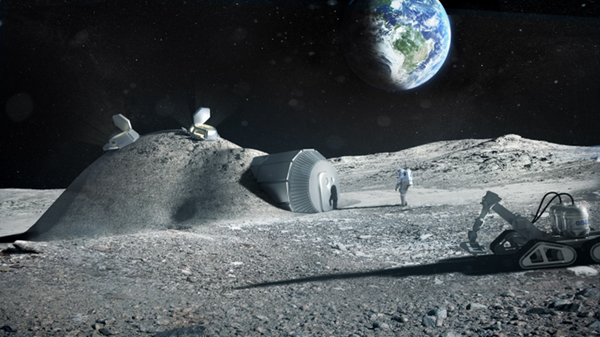The Moon offers something for every observer. It has a face that’s always changing. Following it telescopically through a lunar month can be fascinating.
Ironically, when the Moon is brightest (Full Moon) is the worst time to view it. From our perspective, the Sun is shining on the Moon from a point directly behind us, minimizing shadows and thus revealing scant detail.
The best lunar viewing times are from when the thing crescent becomes visible after New Moon until about 2 days after First Quarter (evening sky) and from about 2 days before Last Quarter to almost New Moon (morning sky). Shadows are longer then, and features stand out in sharp relief.
This is especially true along the Moon’s shadow line – called the terminator – which divides the light and dark portions. Before Full Moon, the terminator shows where sunrise is occuring; after Full Moon, it marks the sunset line.
Along the terminator, you’ll see mountaintops protruding high enough to catch sunlight while the dark lower terrain surrounds them. On large cratere floors, you can follow “wall shadows” cast by sides of craters hundreds of feet high. All these features seem to change in real time, and the differences you can see in one night are striking.
The Moon orbits Earth approximately every 27.3 days. Because Earth also orbits the Sun, the Moon and Sun line up roughly every 29.5 days. The changing positions of the Moon with respect to the Sun cause the Moon, as seen from Earth, to cycle through a series of phases. One complete set of phases is a lunar month. By definition, the lunar month begins at New Moon. We can’t see New Moon from Earth because, at that time, the Moon’s lit side faces the Sun. The Moon then is also quite near the Sun in the sky.
Observing tips
The Moon is a brilliant object through a telescope. Many observers employ either neutral density filters or variable polarizing ones to reduce the light. I prefer the latter because you can change the amount of light filtered.
My late observing friend, Jeff Medkeff, introduced me to a better way, however. Turn on a white light when observing the Moon between First Quarter adn Full. The addition of light suppresses the eyes’ tendency to dark adapt and causes the eye to use normal (scotopic) vision, which is of much higher quality than dark-adapted (photopic) vision.
Lunar oberserves usually don’t use color filters. However, I do have some friends who have noted a darkening of the lunar basalt when they use a red filter. A red filter also can help improve the view when the atmosphere is unsteady. It reduces the Moon’s brightness as well.
Two other methods can reduce the Moon’s brightness: high magnification and an aperture mask. The first restricts the field of view to a small area of the lunar surface and reduces light throughout. The second is a cardboard mask with a smaller hole cut out of it. Cover the front of your telescope with it, and it will transform your telescope into one of smaller aperture (letting less light through) but with the same focal length.
Lunar cartographers differentiate features on the Moon as lighter areas called “highlands” and darker features called “maria” (the Latin word for “seas” [singular = mare]). The maria are lower in altitude than the highlands. The dark material inside the maria is solidified basaltic lava from periods of volcanism up to about a billion years after the Moon formed.
Essentially, anything not covered by lunar basalt is a highland. The highlands consist of ancient lunar surface rock and materials thrown out during the explosive impacts that formed the basins. The highlands are an observer’s treasure trove of mountains and valleys, bright areas and shadows.
Of the 1,940 named features on the Moon, astronomers classify 1,545 (nearly 80 percent) as craters. Many more craters dot the highlands than maria sites. Craters range in size, and some observers challenge themselves by either noting how small a crater they can see or how many small craters in a given area they can observe through a particular telescope.
If you take the second challenge, choose a mare or a crater with a large, flat bottom, and search for craterlets (small craters). For example, on the large crater Plato’s (#11) floor are four craterlets, each about 1.25 miles (2 kilometers) across. You should be able to view those features through an 8-inch scope.
When observing larger craters, note whether you can see “rays” emanating from them. Those features formed when crushed rock sprayed out after an impact. Rays appear as radial streaks and can lie a great distance from the crater itself. For a good example, point your scope toward Copernicus (#4).
Dust off your scope
One of the best ways to familiarize yourself with the Moon is to undertake an observing project. Completing a project involves observing every item on its list, such as the 12 in this story. The Astronomical League hosts another such project, the Lunar Observing Club. Anyone can view the list, but to receive the certificate you must be a member of the league, either individually or through an astronomy club. For online details, see www.astroleague.org/al/obsclubs/lunar/lunar1.html.










